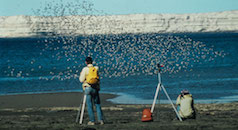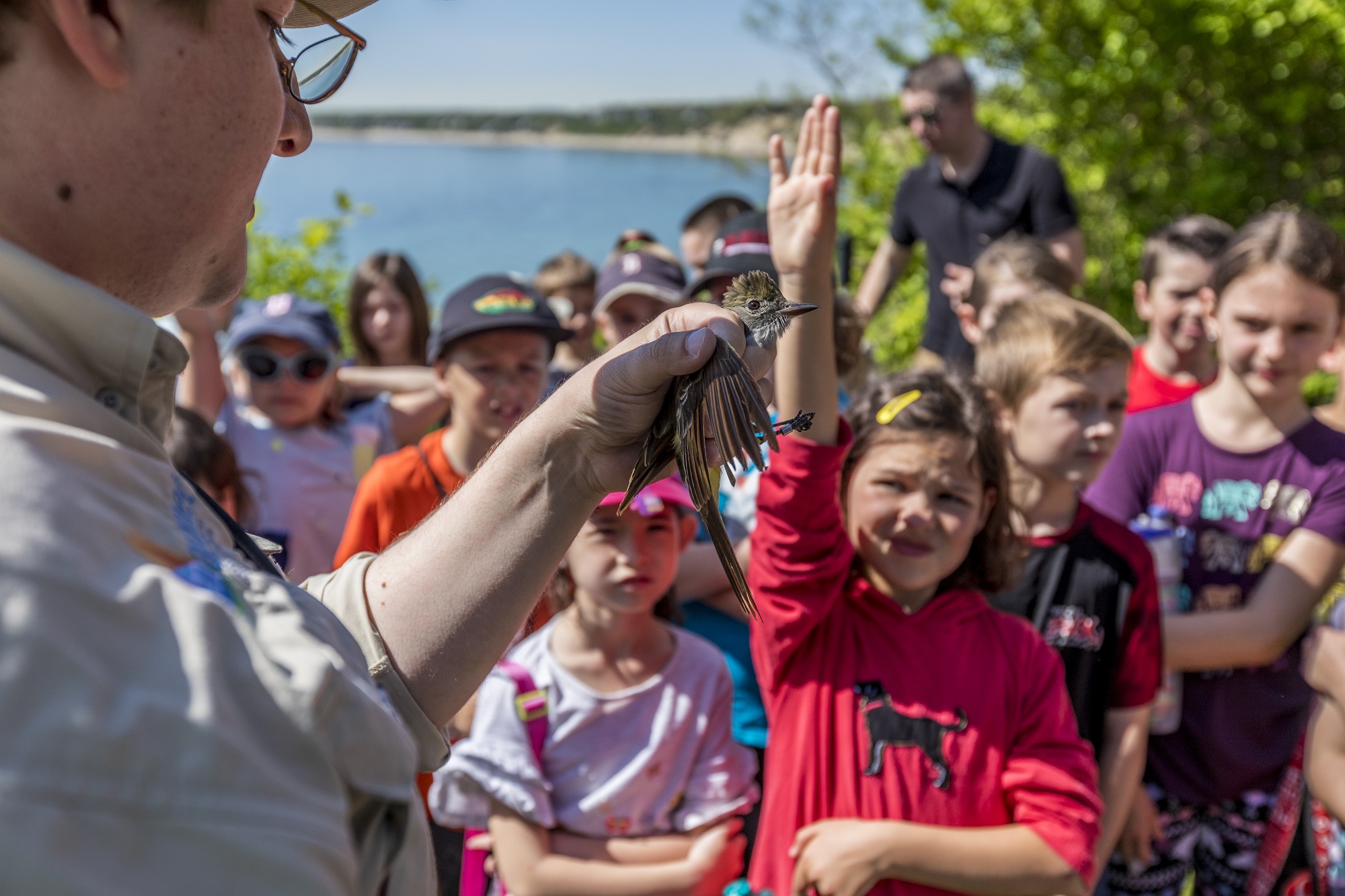By American Oystercatcher Recovery Campaign Coordinator Shiloh Schulte
In the southeast United States American Oystercatchers are year-round residents, but in coastal New England the return of these large, colorful shorebirds is a sure sign of spring.
This year, despite persistent cold weather, an American Oystercatcher arrived on Nantucket in late February, at least a week earlier than usual. This early arrival prompted me to take a look at data from hundreds of resights of banded Oystercatchers to construct the pattern and timing of spring migration to Massachusetts.
In the late ‘90s researchers began cooperatively banding Oystercatchers with field-readable color bands. This effort quickly expanded to multiple sites along the East and Gulf coasts. Over the past 15 years researchers banded over 3,500 American Oystercatchers and collected over 30,000 individual resight records. This wealth of information is stored in a shared database where scientists and interested observers can report banded Oystercatchers and explore the history and movements of individual birds. The cooperative Oystercatcher banding effort has generated new insight into patterns of movement, life expectancy, site and mate fidelity, connectivity, and recruitment.
I used three years (2011-2013) of Oystercatcher resight data from Massachusetts to depict the timing of spring arrival. The accompanying graph shows the average number of new arrivals week-to-week from March through June.
As you can see, the number of returning birds increases each week through April, then begins to drop off as most Oystercatchers have returned and are nesting by this point. There is a small secondary pulse in late May, with new birds still being sighted through June. Thanks to the massive resight effort by researchers and members of the public, we know that many of these late arrivals are young birds searching for a territory for the first time.
Oystercatchers may live for 30-40 years and do not nest until they are at least 3-5 years old. Younger Oystercatchers remain on the wintering grounds for the first few years and then usually return to the vicinity of their nest to search for a territory of their own. Finding a new territory is a challenge for a young Oystercatcher. Older birds vigorously defend their territories and will hold on to a good site for many years. Many younger birds arrive north just as the first wave of nesting is complete. They will look for territories where nests have failed and one of the resident pair has either died or is looking for a new mate. In prime nesting areas, young birds may have to try for several years before they successfully establish a nesting territory.
As you head out to the beaches and salt marshes this spring and summer, keep an eye out for banded Oystercatchers. Please be respectful of their need for space, but if you do get a photo or reading of a color band please report it! Every resight record helps us understand Oystercatchers a little better and moves us closer to the goal of recovery and sustainability of this remarkable species.
 As the Coordinator for the American Oystercatcher Recovery Project, Shiloh is responsible for working with diverse partner organizations along the Atlantic Coast to identify and foster research and management programs that will aid the recovery of American Oystercatchers. Read more about Shiloh in his bio.
As the Coordinator for the American Oystercatcher Recovery Project, Shiloh is responsible for working with diverse partner organizations along the Atlantic Coast to identify and foster research and management programs that will aid the recovery of American Oystercatchers. Read more about Shiloh in his bio.





 Back to all
Back to all
